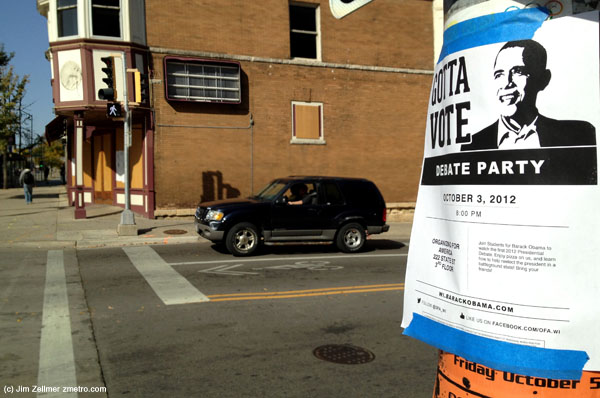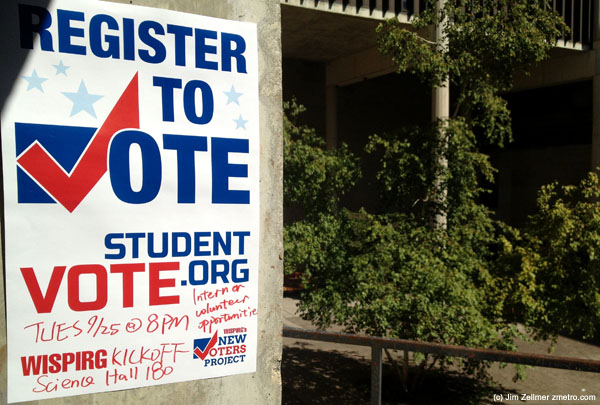The diamond invention—the creation of the idea that diamonds are rare and valuable, and are essential signs of esteem—is a relatively recent development in the history of the diamond trade. Until the late nineteenth century, diamonds were found only in a few riverbeds in India and in the jungles of Brazil, and the entire world production of gem diamonds amounted to a few pounds a year. In 1870, however, huge diamond mines were discovered near the Orange River, in South Africa, where diamonds were soon being scooped out by the ton. Suddenly, the market was deluged with diamonds. The British financiers who had organized the South African mines quickly realized that their investment was endangered; diamonds had little intrinsic value—and their price depended almost entirely on their scarcity. The financiers feared that when new mines were developed in South Africa, diamonds would become at best only semiprecious gems.
Troubled Juárez starts to breathe again
Today, after years of bloodshed, the mortuary is all but empty and the growing sense is that the war may be over.
Bars and restaurants once closed and boarded up because of extortion and fear are reopening. Families that fled to El Paso across the US border are returning, and teenagers, who not so long ago spent weekends indoors to avoid getting caught in a massacre, are rediscovering clubs and discos.
“People are starting to go out and spend money again,” says Cristina Cunningham, president of the national restaurant industry chamber. “The city is coming back to life.”
Notes from the Heartland
Physics suggests that pulling into a residential driveway at 50 miles per hour from a state highway is a bad idea. About one-eight of the Chevy makes it on to Magnolia. It soon joins the majority of the car hurtling towards the bottom of a ditch, propelled by the combined forces of spin, gravity and incompetence.
This is not ideal. I’m in a corpse of an automobile six feet below a gravel path. The engine sounds like a helicopter scything through a migratory flock of sparrows. Fox News confirms that Mitt Romney has begun speaking. Redemption was an adroit turn away.
Fortunately, this is Iowa. A pick-up truck pulls over next to the ditch. “Did you mean to do that?” asks the driver, throwing doubt on America’s trouble with sarcasm. I explain that I am collateral damage in Mr Romney’s war on punctuality. “That’s a lot of trouble to get yourself in for politics,” he says.
Uniqlo’s CEO on His Long, ‘Crazy’ Fight for the Future of Retail
But where other global fashion brands like Zara and H&M zig, Uniqlo zags. Where the other guys focus on winning at the old game of fashion, churning an array of styles through their stores ever more rapidly, Yanai is acting more like a tech executive, nurturing long development cycles in which clothes and advanced materials are carefully iterated. Uniqlo partners with high-tech suppliers like carbon-fiber-maker Toray and cuts 10-year deals with Chinese manufacturers. The model draws as much on Intel and Toyota as Gap.
This approach has made Uniqlo one of the world’s most successful retailers, gaining fast on rivals like Gap and H&M. It has also won the company admiration among apparel executives, who are as impressed by the company’s approach to business as style mavens are by Uniqlo’s collaboration with designers like Jil Sanders. If Uniqlo fulfills its big ambitions, it will have moved technology closer to the center of fashion and helped spread Silicon Valley’s management ethos into the global apparel trade.
The Lone Sailor: Burlington, VT

Tap or click to view the full screen panoramic image. Place your mouse or finger inside the image and pan in any direction.
The Lone Sailor.
The CIA Burglar Who Went Rogue
The six CIA officers were sweating. It was almost noon on a June day in the Middle Eastern capital, already in the 90s outside and even hotter inside the black sedan where the five men and one woman sat jammed in together. Sat and waited.
They had flown in two days earlier for this mission: to break into the embassy of a South Asian country, steal that country’s secret codes and get out without leaving a trace. During months of planning, they had been assured by the local CIA station that the building would be empty at this hour except for one person—a member of the embassy’s diplomatic staff working secretly for the agency.
But suddenly the driver’s hand-held radio crackled with a voice-encrypted warning: “Maintain position. Do not approach target.” It was the local CIA station, relaying a warning from the agency’s spy inside: a cleaning lady had arrived.
The Plight of Young, Black Men Is Worse Than You Think
The U.S. has the highest incarceration rate of any wealthy nation, with about 2.3 million people behind bars at any given moment. (That’s 730 out of 100,000, vs. just 154 for England and Wales.) There are more people in U.S. prisons than are in the country’s active-duty military. That much is well known. What’s less known is that people who are incarcerated are excluded from most surveys by U.S. statistical agencies. Since young, black men are disproportionately likely to be in jail or prison, the exclusion of penal institutions from the statistics makes the jobs situation of young, black men look better than it really is.
That’s the point of a new book, Invisible Men: Mass Incarceration and the Myth of Black Progress, by Becky Pettit, a professor of sociology at the University of Washington. Pettit spoke on Thursday in a telephone press conference.
US hooked on ‘crystal meth’ debt, says Gross
Bill Gross has compared the US government’s reliance on debt financing to a “crystal meth” addict, in the latest in a series of dire warnings from one of the most influential investors in the bond market.
“The US, in fact, is a serial offender, an addict whose habit extends beyond weed or cocaine and who frequently pleasures itself with budgetary crystal meth”, said Mr Gross, who manages the $273bn Total Return bond fund for Pimco.
Investors sound alarm on UK’s RPI reform
In an investment outlook that began with a discussion of the 69-year old investor’s lack of long-term memory, Mr Gross returned again to a theme that he has visited over the last decade: unsustainable US spending.
A Gorgeous Madison Weekend

God’s Handiwork




Hitler’s Berlin: Abused City
FOR LIBERALS AND leftists in Germany, Berlin has always represented the dark side of German history. As capital of the military state of Prussia, it became the grandiose center and symbol of the Reich founded by Bismarck in 1871—culturally stuffy, conservative, dull, backward, dominated by civil servants and soldiers. No wonder that when liberals and Social Democrats established a democratic Republic after the overthrow of the Kaiser, they avoided the Prussian capital. They sought to distance themselves from Berlin by holding the Constituent Assembly in the provincial town of Weimar, forever associated with the name of Goethe and Schiller, Germany’s greatest poets and writers. Weimar was, of course, far from the revolutionary turbulence and street-fighting raging across the capital in the early months of 1919, but it also provided distance from a past that the creators of the new Germany wanted to reject.